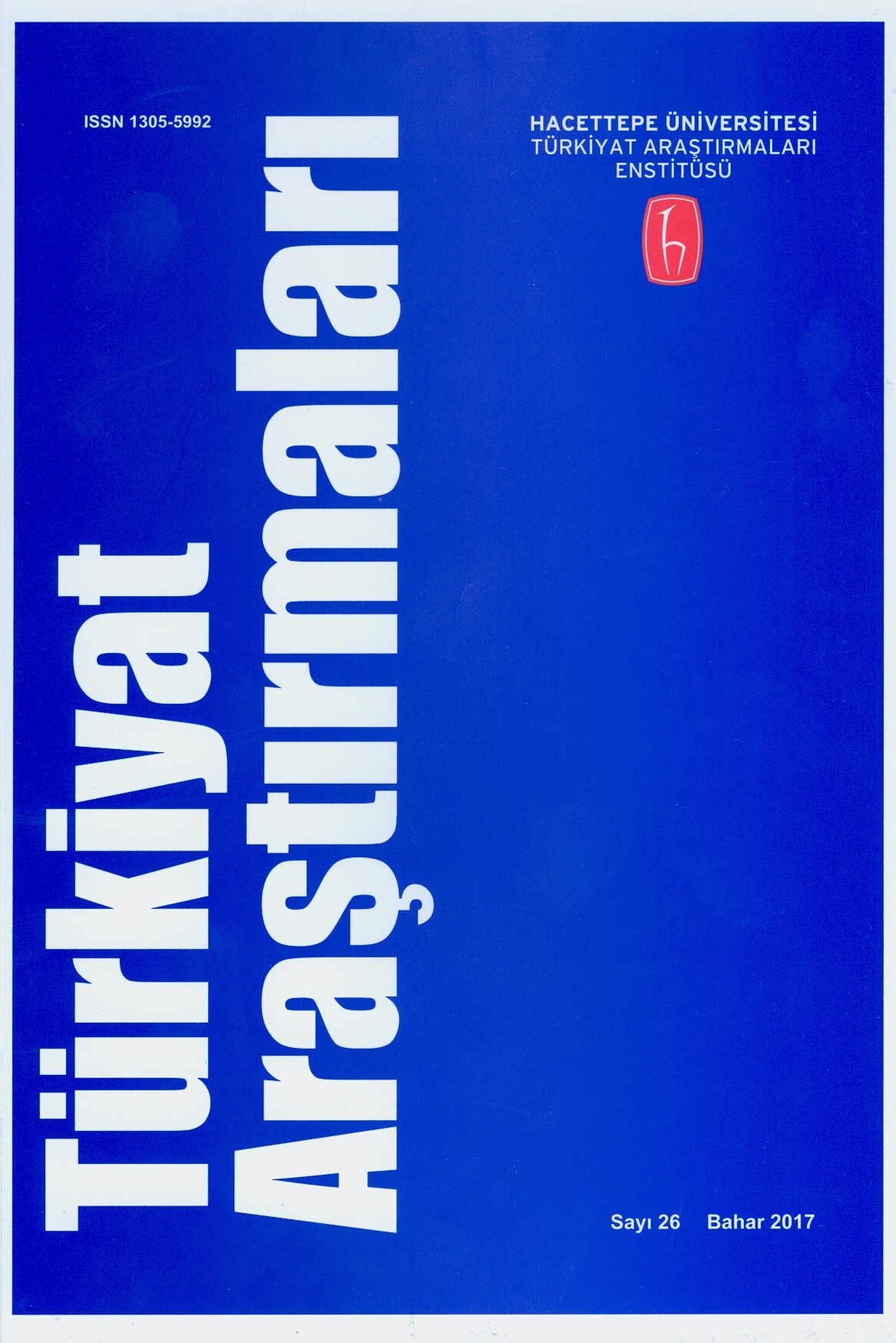George Hayward’s Journey to the Central Asia: The Periphery of the British Imperialist Politics
Geography formed an important part of the scientific knowledge which Britain needed during the time when its interest in Central Asia was starting to increase. The technical innovations developed accordingly were implemented in the field and cartography activities intensified. With the alternation of the domestic political dynamics and economic policies, George Hayward’s journey to Eastern Turkestan with the intent of a geographical expedition has a special importance in this context. This adventurer who was employed on a salary by Royal Geographical Society is the only move made by them in order to receive a recompense for politics-geography relation in the field. This move is the plan of the decision making British administrative, military and academic authorities converging in the same political direction. Consequently, Hayward served for the financial and political interests as a result of his geographical expedition.
Anahtar Kelimeler:
Royal Geographical Society, George Hayward, Eastern Turkestan, Yarkand, Kashgar
George Hayward’s Journey to the Central Asia: The Periphery of the British Imperialist Politics
Geography formed an important part of the scientific knowledge which Britain needed during the time when its interest in Central Asia was starting to increase. The technical innovations developed accordingly were implemented in the field, and cartography activities intensified. With the alternation of the domestic political dynamics and economic policies, George Hayward’s journey to Eastern Turkestan in 1868 with the intent of a geographical expedition has a special importance in this context. This adventurer employed on a salary by the Royal Geographical Society is their only move to capitalize on the relation between geography and politics. This journey is the result of a decision-making mechanism merging the British administrative, military and academic authorities under the same political direction. Consequently, Hayward’s geographical expedition served their financial and political.
Keywords:
Royal Geographical Society George Hayward, Eastern Turkestan, Yarkand, Kashgar, Kashgar Khanate,
___
- Hayward, G. W. (1868). Letter from Mr. G. S. W. Hayward, 15 August 1868. Proceedings of the Royal Geographical Society of London, 13 (1), pp. 9-10.
- Hayward, G.W. (1869). Journey From Leh to Yarkand and Kashgar, and Exploration of the Sources of the Yarkand River. Proceedings of the Royal Geographical Society of London, 14 (1), pp. 41-74.
- Purdon, W. H. (1861). On the Trigonometrical Survey and Physical Configuration of the Valley of Kashmir. The Journal of the Royal Geographical Society of London, (31), pp. 14-30.
- Rawlinson, H. C. (1866). Observations on Two Memoirs Recently Published by M.Veniukof on the Pamir Region and Bolor Country in Central Asia. Proceedings of the Royal Geographical Society of London, 10(4), pp.134-153.
- Rawlinson, H.C. (1866). On the Recent Journey of Mr. W. H. Johnson from Leh, in Ladakh, to Ilchi in Chinese Turkistan. Proceedings of the Royal Geographical Society of London, 11(1), pp. 6-15.
- Wood, J. (1841). Personal Narrative of a Journey to the Source of the River Oxus The Route of the Indus, Kabul, And Badakhshan, Performed Under the Sanction of the Supreme Government of India, in the years 1836, 1837, and 1838, London, John Murray, Albemarle Street.
- Markham, C. R. (1881).The Fifth Year’s Work of the Royal Geographical Society. John Murray, Albemarle Street, London. Duthie, J. L. (1981). Pressure From within: The "Forward" Group in the India Office During Gladstone's First Ministry. Journal of Asian History, 15(1) pp. 36-72.
- Goldsmid, J. F. (1895). Obituary: Major-General Sir Henry Creswicke Rawlinson, Bart., G. C. B., etc. The Georgraphical Journal, 5(5) pp. 490-497.
- Hannigan, T. (2011). Murder in the Hindu Kush: George Hayward and The Great Game, Tranquebar Press.
- MacKenzie, J. M. (1990). Introduction. Imperialism and the Natural World, Manchester University Press, Machester.
- Roy, R. D. (1986). The Great Trigonometrical Survey of India in a Historical Perspective. Indian Journal of History of Science, 21 (1), pp. 22-32.
- Stafford, R. A. (1989). Scientist of Empire: Sir Roderick Murchison, Scientific Exploration and Victorian Imperialism. Cambridge University Press, Cambridge.
- Timmis, C. (1998). George Hayward: His Central Asian Explorations, His Murder, His Legacy. Asian Affairs, 29 (2) pp. 161-170.
- Yule, H. (1913). Cathay And The Way Thither: Being a Collection of Medieval Notices of China. Council of the Hakluyt Society.
- Waller, D. J. (2004). The Pundits: British Exploration of Tibet and Central Asia. The University Press of Kentucky, Kentucky.
- Watson, G. (2007). Siting in the Stage: Representations of Central Asian Environments in British Literature, 1830-1914. New Zealand Journal of Asian Studies 9 (1) pp. 96-117.
- Withers, W.J.C. (2013). On Enlighment’s Margins: Geography, Imperialism and Mapping in Central Asia, 1798-1838. Journal of Historical Geography 39, pp. 3-18.
- ISSN: 1305-5992
- Yayın Aralığı: Yılda 2 Sayı
- Başlangıç: 2004
- Yayıncı: Hacettepe Üniversitesi
Sayıdaki Diğer Makaleler
Klasik Türk Şiirinde “Rişte-i Cân” Kavramının Anlam Çerçevesi
Türkiye Türkçesindeki Bağlayıcı Yarı Ünlünün Art Zamanlı Gelişimi
17. Yüzyılda İzmir’e Ermeni Göçü: Acem Tüccarları ve Hemşehrilik Ağları
Orhan Veli Kanık’ın Şiirlerinde Bilinçaltının Metaforik Yansımaları
Sessiz Ev Romanında Kadına Bakış, Sessizlik ve Şiddet
Yunan Kaynaklarına Göre Tepedelenli Ali Paşa ve Yönetimindeki Yunanlar
Bağımsızlık Dönemi Kazak Edebiyatında Jeltoksan Ayaklanması
Arhavi Kazasında İskân ve Nüfus: (1583-1681/1682)
Harezmşah - Kıpçak Münasebetleri ve Harezmşah Ordusunda Kıpçak Unsurlar
George Hayward’s Journey to the Central Asia: The Periphery of the British Imperialist Politics
